About Mayu’s Hair Paper
My friend Mayu Kanamori was diagnosed with breast cancer last year, and she took the brave step of documenting her journey with the help of several friends. Accepting that she would lose her long black hair in the course of treatment, she asked what could be done with the hair. At this point I found a way I could contribute to the process by turning the hair into paper. However, hair will not make paper on its own, so I had to decide on a suitable fibre to combine with it which would enhance the hair’s qualities. I chose some cumbungi (native bulrushes) which I had collected at a special site in the Northern Wakka country called Ban Ban Springs. This was traditionally a watering hole and gathering place and this is one of those sites where traditional use persists into the present day, with RVs allowed to stay overnight and many travelers electing to break their journey at this welcoming 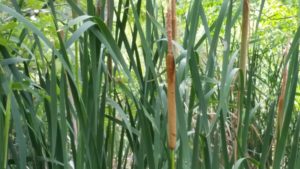
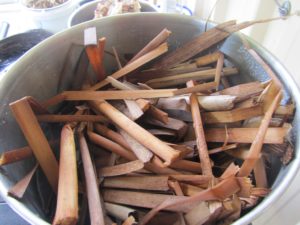
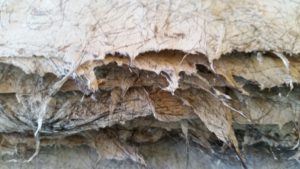
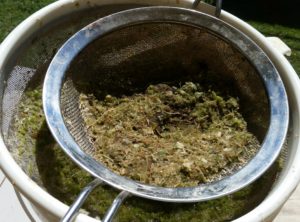
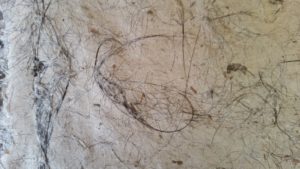
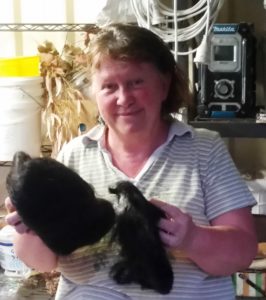
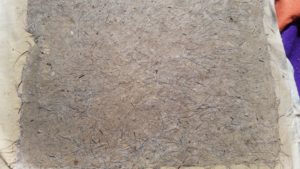
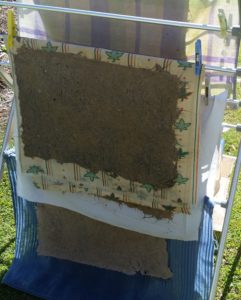
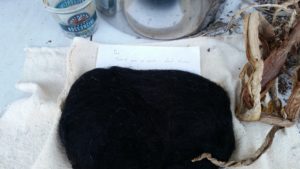 spot.
spot.
I walked back to a soak behind the pool where lots of moisture-loving plants including Cumbungi (native bulrushes) and cunjevoi lily are growing. I collected dead and dry cumbungi stalks. On a subsequent trip I also collected some small specimens of prickly pear, a weed of the region, which has a gel-like sap.
The cumbungi was cooked for 3 hours on its own, then cooked a further 3 hours in an alkaline solution made with washing soda. It was then pounded with a mortar and pestle to soften the thicker stalks and finally blended before adding to a vat. The prickly pear was added to water and bended, then strained and the gel added to the vat to help disperse the fibres.
The hair was added to this batch and mixed for some time by hand. The prickly pear was not enough to disperse the fibres effectively so several leaves of aloe vera were also blended and strained, and this gel also added to the mix. The larger sheets (A3 size) were couched first. Some blended paper scraps had to be added due to difficulties in couching the paper with a high proportion of hair. 17 sheets of A4 were made and then there was not enough pulp left for any more large sheets, but I transferred the remaining pulp to a smaller vat where I was able to pull another seven sheets of A4 sized paper with the addition of some more paper pulp. One whole day was needed to pull the sheets as the hair mixture was difficult to work with. The sheets were sun-dried then pressed in a home-made press for flatness and strength.
The overall process took about 3 weeks from collecting the cumbungi, cooking and pounding it and making all the additives, through to drying and pressing. Mayu later formed these sheets into lanterns which were released into Tarban Creek, which flows into Sydney HArbour. Toro-nagashi is a Japanese ceremony in which participants float paper lanterns down a river. It is traditionally performed during the O-bon Festival in the belief that it will help to guide the souls of the departed to the spirit world.
You can read more of Mayu’s journey on her project “I Just Can’t Say That Word” at https://ijustcantsaythatword.wordpress.com/2017/04/25/284/
0 comments on “Mayu’s Hair Paper”